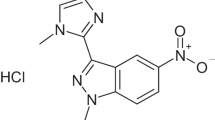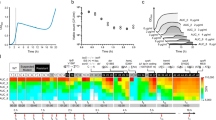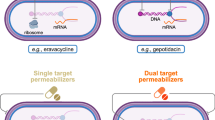Abstract
ONE of the chief obstacles to chemotherapy with antibiotics has been the frequent emergence of drug-tolerant bacteria. The availability of means to prevent or suppress the development of resistant cultures could have immense medical import as well as providing a valuable tool for the study of mutagenesis. Sevag and collaborators1–3 reported that when polyamines were included in the culture medium of various micro-organisms, the outgrowth of drug-resistant populations in the presence of low concentrations of antibiotics was significantly delayed. They interpreted these observations as suggesting an antimutagenic role for the polyamines and further proposed that the site for this antimutagenic action is the DNA of the sensitive cells. Because of the theoretical implications of these observations it was of interest to establish in a more rigorous manner whether polyamines are antimutagens or whether the effects described by Sevag and co-workers could be explained in some other manner. This communication presents evidence that the inclusion of spermine in bacterial culture media resulted in a significant decrease in the random mutation rate of Escherichia coli and Staphylococcus aureus. The mutational events which were investigated were the one-step development of resistance to streptomycin and the back mutation to autotrophic growth by a tryptophan-requiring mutant. Spermine caused even more striking antimutagenic effects when mutations were induced by the inclusion of caffeine in the culture medium4 or by ultra-violet light. Future papers will seek to demonstrate that bacterial DNA could be the site of action of this compound5. A preliminary report on some of these experiments has already been given6.
This is a preview of subscription content, access via your institution
Access options
Subscribe to this journal
Receive 51 print issues and online access
$199.00 per year
only $3.90 per issue
Buy this article
- Purchase on SpringerLink
- Instant access to full article PDF
Prices may be subject to local taxes which are calculated during checkout
Similar content being viewed by others
References
Sevag, M. G., and Drabble, W. T., Biochem. Biophys. Res. Commun., 8, 446 (1962).
Sevag, M. G., Arch. Biochem. Biophys., 108, 85 (1964).
Sevag, M. G., and Ashton, B., Nature, 203, 1323 (1964).
Novick, A., Brookhaven Symp. Biol., 8, 201 (1956).
Johnson, H. G., and Bach, M. K., Bact. Proc., G23 (1965).
Johnson, H. G., and Bach, M. K., Bact. Proc., G144 (1964).
Drabble, W. T., and Hinshelwood, C., Proc. Roy. Soc., B, 154, 449 (1961).
Steers, E., and Sevag, M. G., Arch. Biochem., 24, 129 (1949).
Luria, S. E., Cold Spring Harbor Symp. Quant. Biol., 18, 130 (1946).
Kubitschek, H. E., and Bendigkeit, H. E., Mutation Res., 1, 113 (1964).
Doudney, C. O., White, B. F., and Bruce, B. J., Biochem. Biophys. Res. Commun., 15, 70 (1964).
Demerec, M., Proc. U.S. Nat. Acad. Sci., 31, 16 (1945).
Author information
Authors and Affiliations
Rights and permissions
About this article
Cite this article
JOHNSON, H., BACH, M. Apparent Suppression of Mutation Rates in Bacteria by Spermine. Nature 208, 408–409 (1965). https://doi.org/10.1038/208408a0
Issue date:
DOI: https://doi.org/10.1038/208408a0
This article is cited by
-
Mutator genes in different species
Humangenetik (1972)
-
Amplification of phleomycin induced death and DNA breakdown by caffeine in escherichia coli
Molecular and General Genetics MGG (1970)
-
Induction of DNA breakdown and death in Escherichia coli by phleomycin
Molecular and General Genetics MGG (1969)
-
Caffeine-death in Escherichia coli
Molecular and General Genetics MGG (1968)
-
Antimutagenic activity of actinomycin D and basic fuchsine in Saccharomyces cerevisiae
Molecular and General Genetics MGG (1968)



